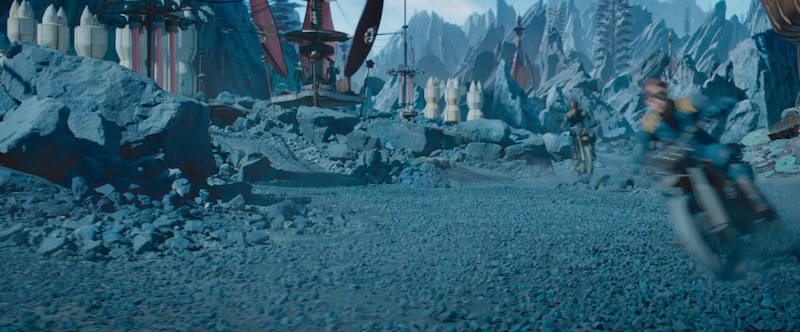"The Furniture" our weekly series on Production Design. Here's Daniel Walber
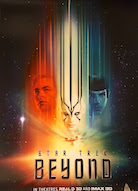 Early in Star Trek Beyond, screenwriters Simon Pegg and Doug Jung wedge a dumb joke into the voice over narration of Captain Kirk (Chris Pine). He has led the Enterprise and its crew across the galaxy to fulfill an endless series of missions, many of them quite similar. His life, he explains, has begun to feel a bit “episodic.” Very funny.
Early in Star Trek Beyond, screenwriters Simon Pegg and Doug Jung wedge a dumb joke into the voice over narration of Captain Kirk (Chris Pine). He has led the Enterprise and its crew across the galaxy to fulfill an endless series of missions, many of them quite similar. His life, he explains, has begun to feel a bit “episodic.” Very funny.
Yet Star Trek Beyond is, in its own way, a self-contained episode of an ongoing series. The bulk of the film takes place on a single planet. No time is spent on earth, nor is the home world at any significant risk. There is no massive cross-galaxy conflict. The story is given a satisfying conclusion, without participating in a grand trilogy or teasing a far-off sequel. This isn’t Star Wars or, for that matter, the Marvel Cinematic Universe.
This means that the production design team, not tasked with a universe of diverse locations, focused on on just a couple of planets...
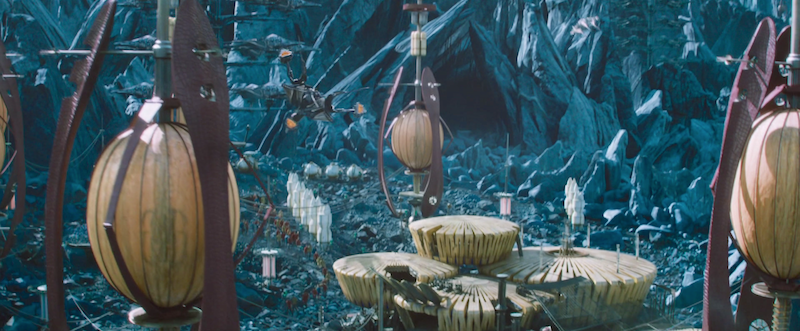
The floating Federation outpost of Yorktown is a mix of elaborate CGI and location shooting in Dubai. The base of the villainous Krall, on the remote planet Altamid, is made up of cleverly designed sets constructed in a quarry in British Columbia.
Aerial shots let the audience take in the scope of the compound immediately. There are a few buildings shaped like grounded flying saucers, or perhaps giant pot pies with patterned ventilation slits. They’re surrounded by large melons suspended in grand red vises and a few towers that house Krall’s space fleet of drone “bees.”
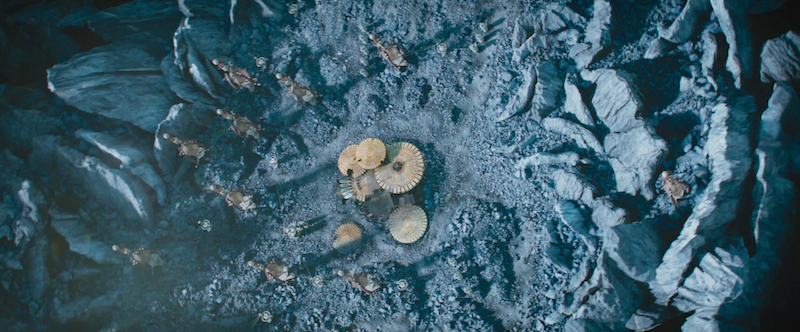
Production designer Tom Sanders (Bram Stoker's Dracula, Crimson Peak), supervising art director Don Macaulay (Tomorrowland) and their whole team have crafted sets that don’t get any less interesting as the film progresses. Their charming alienness is a throwback to the strange planets of the various Star Trek television series. More importantly, these structures look interesting from every angle. Look at the cracks visible here, in some cases creating natural doors.
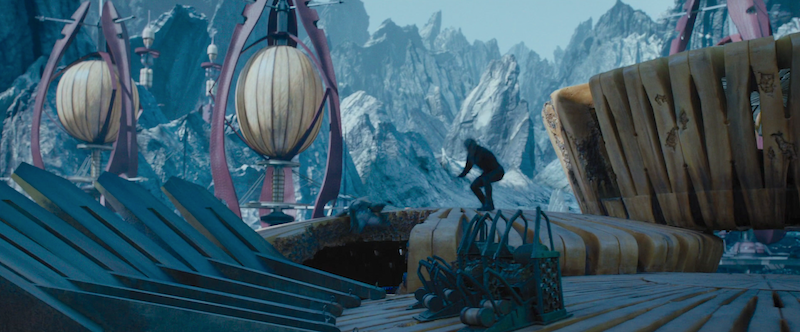
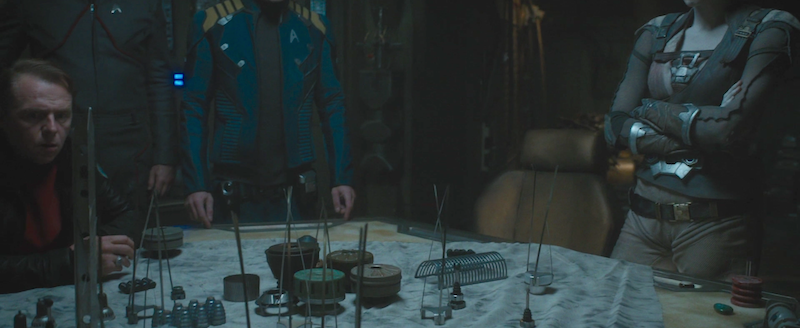
The compound is even entertaining in miniature, fashioned by Jaylah (Sofia Boutella) to plan the assault.
Yet despite this mapping, there isn’t a perfect sense of relative geography. That’s fine. One could even consider it a throwback to the flighty science fiction movies of the 1960s. Commander Spock (Zachary Quinto) and Doctor McCoy (Karl Urban) crash land amid a confused muddle of giant rocks, which the production team constructed from scratch. Eventually they find a path up to Krall’s base, the artificial landscape leading them with the weird inevitability of the maze in Barbarella
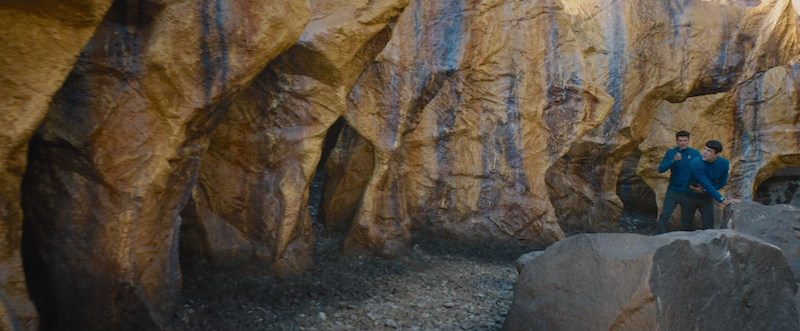
Of course, the Jane Fonda classic is set in a much more complex alien society. Krall’s base seems to be the only thing of value on this entire planet, itself sitting quietly beyond the frontier of the Federation. Its design is singularly thorough, possessing a unity of design that emphasizes the best instincts of the designers. The interiors of the pie-shaped structures match the exteriors. They are often nearly hollow, suggesting their makeshift construction and their recent adaptation by Krall. The material seems to be ancient, the patterns nearly ritual.
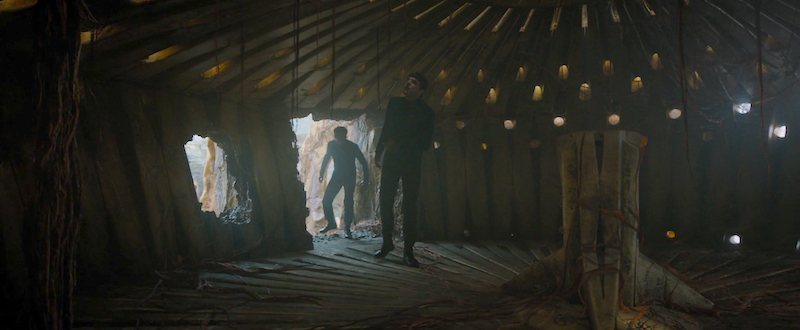
Yet they can also be electric and claustrophobic, the uniform wall indentations suggesting the regimented lines of a prison. The chamber in which Krall tests out his malevolent device on an innocent crew member lights up with unsettling precision. The enclosure offers no escape from the coming disintegration.
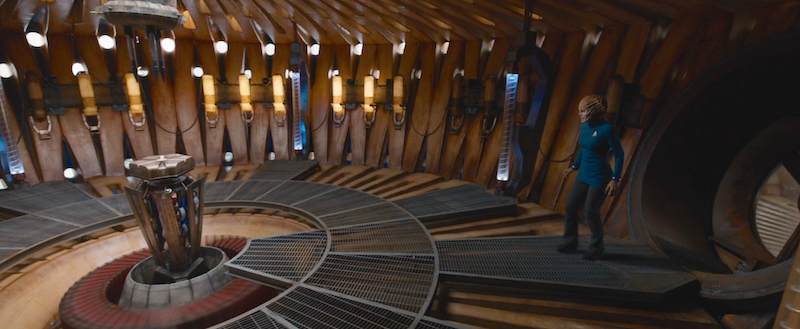
Finally, it’s a great set for the fast-paced action sequence that drives the narrative away from the planet and once more out to the CG design of open space. The physical presence of the buildings, as well as their relative smallness, creates an excellent jungle gym for the cast (stunt actors included). This is 21st century science fiction design that still allows for an exciting and terrestrial motorcycle chase, and for that we should be thankful.
